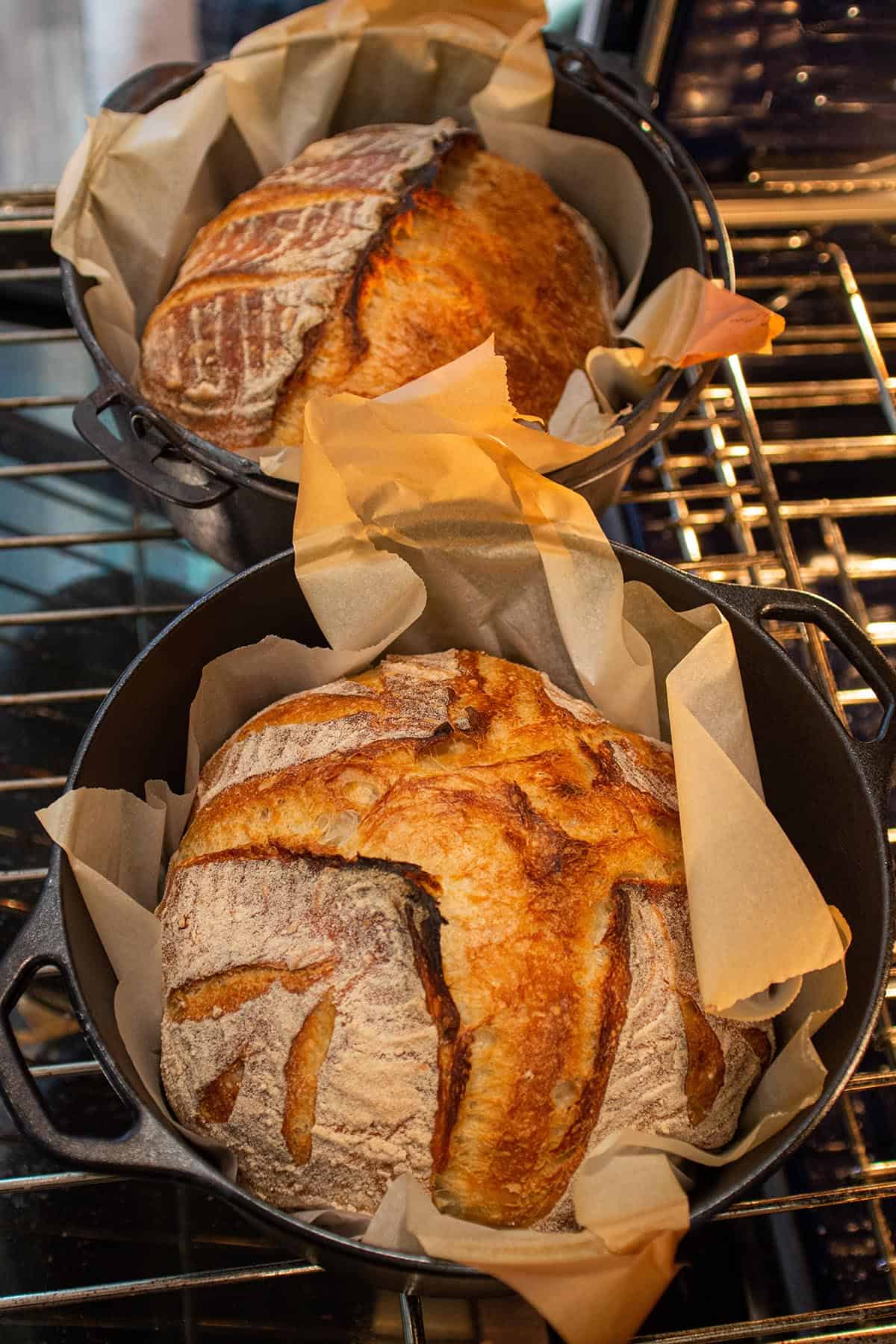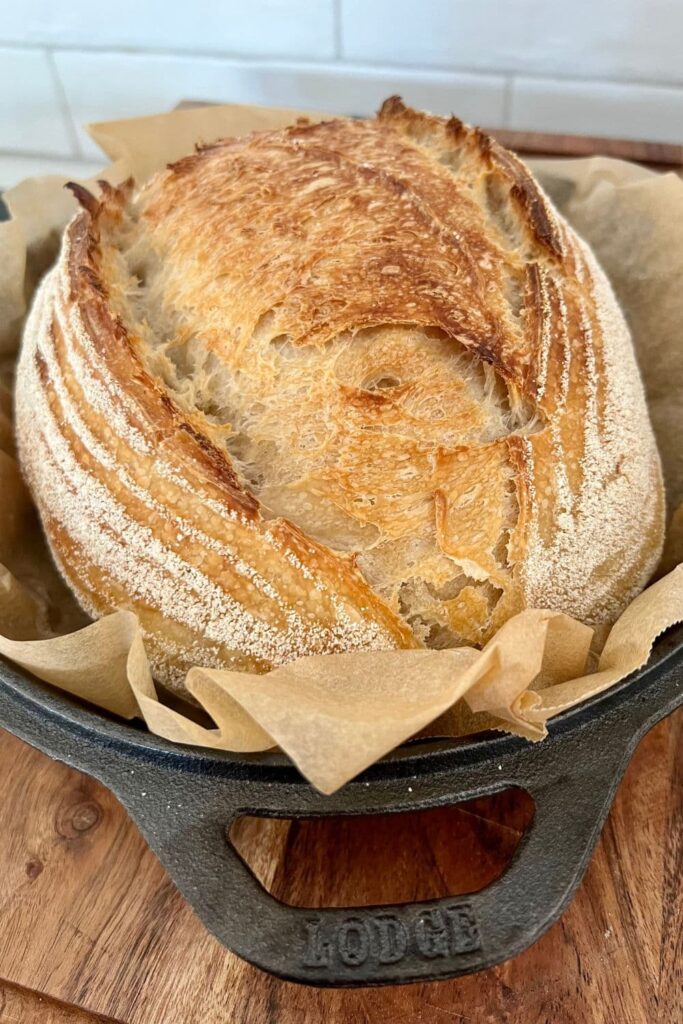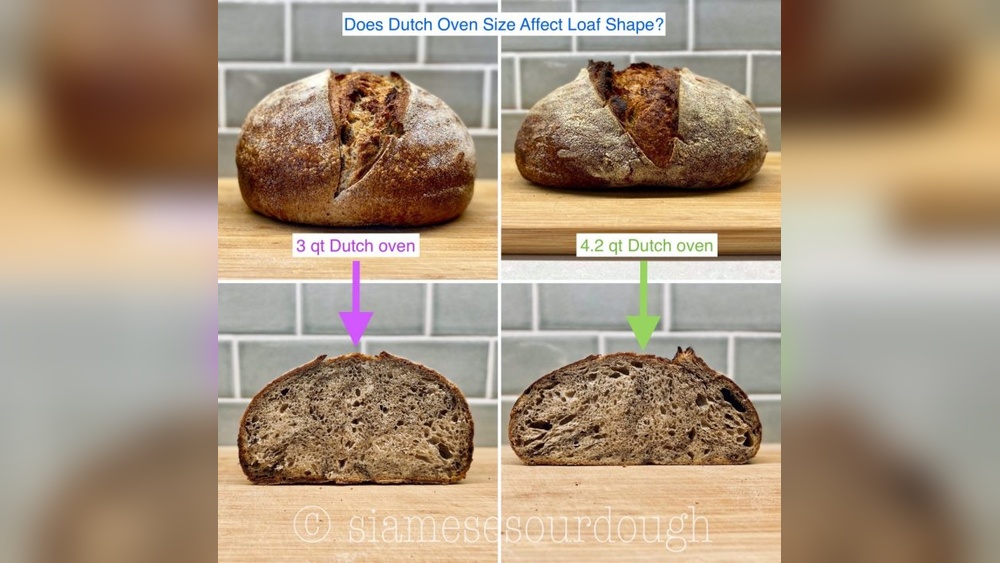Choosing the right Dutch oven can make all the difference when baking your perfect sourdough bread. But with so many sizes available, how do you know which one fits your needs best?
Whether you’re baking your very first loaf or looking to up your bread game, the size of your Dutch oven affects everything—from the loaf’s shape and crust to how evenly it bakes. In this guide, you’ll discover the ideal Dutch oven size for your sourdough, helping you bake bread that rises beautifully and tastes amazing every time.
Ready to find the perfect fit for your kitchen? Let’s dive in.
Dutch Oven Sizes
Choosing the right Dutch oven size is key for baking sourdough bread. The size impacts how your bread bakes and the loaf’s final shape. Dutch ovens come in various sizes, usually measured in quarts. Each size suits different baking needs and loaf sizes.
Consider how much bread you want to bake and your oven space. Smaller Dutch ovens heat up quickly and are easier to handle. Larger ones allow bigger or multiple loaves but can be heavier and need more oven room.
5-quart Options
Five-quart Dutch ovens are ideal for beginners and small loaves. They fit standard sourdough recipes well. This size heats evenly and is easier to move in and out of the oven. If you bake for one or two people, a 5-quart Dutch oven works perfectly.
It is also lighter, which helps avoid accidents when handling hot cookware. The smaller size helps retain moisture, giving the bread a nice crust and soft inside. This size fits most kitchen ovens without any problem.
6-quart Options
Six-quart Dutch ovens offer more space for larger loaves or slightly bigger batches. They suit those who want flexibility in their baking. This size can hold a loaf large enough for a family or small group.
It provides good heat distribution and keeps the bread moist. The 6-quart Dutch oven is still manageable in weight and fits well in most ovens. It is a popular choice for home bakers who want to grow their skills.
7-quart And Larger
Seven-quart and larger Dutch ovens are for serious bakers or big families. These sizes hold large loaves or multiple smaller loaves at once. They require more oven space and are heavier to handle.
Baking in a large Dutch oven may need slight adjustments in temperature or time. Large ovens create room for better air circulation around the bread. This size is perfect for those who bake often or want to try different bread shapes.

Credit: dirtanddough.com
Loaf Size And Shape
Choosing the right Dutch oven size depends greatly on the size and shape of your sourdough loaf. The loaf size affects how the bread bakes inside the Dutch oven. The shape impacts heat distribution and crust formation. Understanding these factors helps you pick the best Dutch oven for your baking needs.
Consider the dimensions of your dough before selecting a Dutch oven. Your goal is to provide enough space for the loaf to rise and expand without crowding. This ensures even baking and a perfect crust.
Round Vs Oval Loaves
Round loaves fit best in round Dutch ovens. They allow even heat circulation around the bread. Oval loaves need oval or oblong Dutch ovens for proper shaping. Using the wrong shape can squash your dough or cause uneven baking. Choose a Dutch oven that matches your preferred loaf shape for the best results.
Loaf Expansion And Oven Spring
Sourdough bread expands during baking, a process called oven spring. Your Dutch oven must have enough room for this rise. Too small a Dutch oven will limit expansion and flatten your loaf. A slightly larger Dutch oven lets the bread grow fully and develop a nice crust. Leave at least one to two inches of space around the dough for optimal oven spring.
Baking Considerations
Baking sourdough bread in a Dutch oven needs careful attention. The size of the Dutch oven affects heat distribution and baking results. Knowing how to manage baking times and temperature helps create perfect crust and crumb. These factors impact how your sourdough turns out.
Adjusting Baking Times
Different Dutch oven sizes change baking times. A larger Dutch oven may need longer baking to cook the bread center fully. Smaller Dutch ovens usually bake faster. Watch your bread closely and test with a thermometer or toothpick. Adjust time by 5 to 10 minutes as needed to avoid undercooked or burnt bread.
Temperature Management
Heat retention varies with Dutch oven size and material. Cast iron holds heat well, ensuring even baking. Preheat your Dutch oven before placing the dough inside. Larger pots might require lowering the oven temperature slightly to prevent over-browning. Use an oven thermometer to keep the temperature steady. Proper heat control ensures a crispy crust and soft inside.

Credit: kanalifestyle.com
Handling And Storage
Choosing the right Dutch oven size for sourdough bread impacts handling and storage. A suitable size ensures ease of use and fits your kitchen setup. Consider both how heavy it feels and where you will store it. These factors affect daily baking comfort and kitchen organization.
Weight And Maneuverability
Heavier Dutch ovens can be hard to lift, especially when hot. Cast iron models often weigh more than other materials. A 5-quart size balances weight and bread size well. It stays manageable for most people. Larger sizes offer more baking space but increase weight. Think about your strength and lifting ability before buying.
Handles should provide a good grip. This helps when moving the oven in and out of the oven. Avoid sizes that feel too bulky or heavy for safe use. Light enough to move easily but heavy enough to retain heat is ideal.
Kitchen Space And Oven Fit
Measure your oven before choosing a Dutch oven size. Not all ovens fit large Dutch ovens comfortably. A 5 to 6-quart Dutch oven fits most standard ovens. Check your kitchen cabinets or shelves too. Storage space must hold the Dutch oven and its lid. Find a spot that keeps it handy but out of the way.
Smaller Dutch ovens save space but limit loaf size. Larger ones allow bigger loaves but need more room. Think about your kitchen’s size and how often you bake. Choose a Dutch oven that matches your space and baking habits.
Versatility And Usage
Choosing the right Dutch oven size goes beyond baking sourdough bread. The size affects how you use it in the kitchen. A good Dutch oven offers versatility. It can handle different cooking tasks with ease. Knowing the usage helps you pick the best size for your needs.
Baking Multiple Loaves
Some bakers want to bake more than one loaf at a time. A larger Dutch oven makes this possible. For example, a 6-quart or bigger size can fit two smaller loaves. This saves time and energy, especially for busy kitchens.
However, baking multiple loaves means adjusting the baking time. Larger ovens may need lower heat or longer baking to cook the bread evenly. Also, consider the weight. Bigger Dutch ovens are heavier and harder to handle safely.
Make sure your kitchen oven has enough space. Two Dutch ovens must fit comfortably without crowding. This allows proper air flow and even cooking.
Other Cooking Uses
A Dutch oven is not just for bread. Its thick walls and tight lid hold heat well. This makes it perfect for stews, soups, and braises. A medium size, like 5 to 6 quarts, works well for these dishes.
Smaller Dutch ovens may be too small for large meals. Larger ones can cook big roasts or whole chickens. The versatility lets you use one pot for many recipes. This reduces the need for extra cookware.
Choosing a size that fits your cooking style adds value. It makes your kitchen more efficient and your meals more delicious.
Material And Lid Types
Choosing the right material and lid type for your Dutch oven impacts your sourdough bread baking. The Dutch oven creates a mini steam oven environment, crucial for a crispy crust and soft interior. Different materials affect heat distribution and retention, while the lid design controls moisture and heat inside. Understanding these factors helps you pick the best Dutch oven for baking perfect sourdough.
Cast Iron Benefits
Cast iron holds heat evenly and steadily. This helps bake sourdough bread uniformly. It maintains a high temperature needed for a good crust. Cast iron can go from stovetop to oven safely. It lasts for many years with proper care. Enamel-coated cast iron does not need seasoning and is easier to clean. Cast iron’s heavy weight also helps trap steam inside.
Lid Fit And Heat Retention
A tight-fitting lid keeps steam from escaping during baking. This steam is key for sourdough’s crust and rise. A snug lid ensures heat stays inside longer. Some lids have ridges that catch condensation and drip it back on the bread. This adds moisture and improves crust texture. Lids made of the same material as the pot retain heat best. Avoid loose lids that let heat and steam escape quickly.
Choosing Based On Frequency
Choosing the right Dutch oven size depends largely on how often you bake sourdough bread. Your baking frequency affects which size will best suit your kitchen and lifestyle. A Dutch oven that fits your needs makes baking easier and more enjoyable. Consider your baking habits before picking a size.
Casual Baking Needs
Bakers who bake sourdough occasionally benefit from a medium-sized Dutch oven. A 5-quart Dutch oven is ideal for casual use. It fits most standard sourdough recipes. This size is easier to handle and store. It also heats evenly for a perfect crust. If you bake once or twice a month, this size works well. It offers convenience without taking too much space.
Frequent Baking Demands
If you bake sourdough bread regularly, a larger Dutch oven is better. A 6 to 7-quart Dutch oven allows for bigger loaves or multiple smaller ones. Frequent bakers can handle the extra weight and size. It provides more versatility for different recipes. This size also helps when baking two loaves at once. Investing in a larger Dutch oven saves time for regular bakers. It supports a more active baking routine with ease.

Credit: www.pantrymama.com
Frequently Asked Questions
Is A 7qt Dutch Oven Too Big For Bread?
A 7qt Dutch oven is not too big for bread. It suits larger or oval loaves and multiple batches well. Adjust baking time slightly for even cooking.
Can I Use A 4 Qt Dutch Oven For Sourdough?
Yes, a 4 qt Dutch oven works for sourdough but suits smaller loaves. It may limit loaf size and oven spring. For typical sourdough, a 5 to 7 qt Dutch oven offers better space and crust development. Choose based on your loaf size and recipe needs.
What Size Dutch Oven Is Best For Sourdough Bread?
A 5 to 7-quart Dutch oven is ideal for sourdough bread. It fits standard loaf sizes and allows proper oven spring. Larger sizes suit bigger loaves or multiple batches, while smaller ones are easier to handle and perfect for beginners.
Can I Use A 5-quart Dutch Oven For Sourdough?
Yes, a 5-quart Dutch oven works well for most sourdough recipes. It’s easy to handle and fits typical loaf sizes, ensuring even heat distribution and good crust development without crowding the dough.
Conclusion
Choosing the right Dutch oven size makes baking sourdough easier and more fun. A 5-quart Dutch oven suits most beginners and standard loaves well. For bigger or multiple loaves, consider a 6 or 7-quart size. Remember to match the Dutch oven size to your loaf and oven space.
This simple step helps your bread bake evenly and develop a perfect crust. Enjoy baking with the best fit for your kitchen and bread style.

